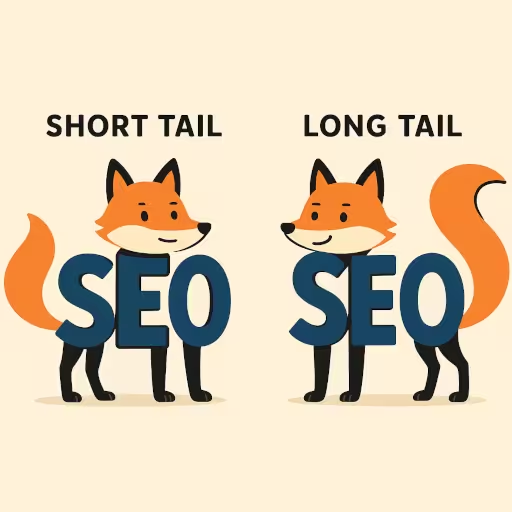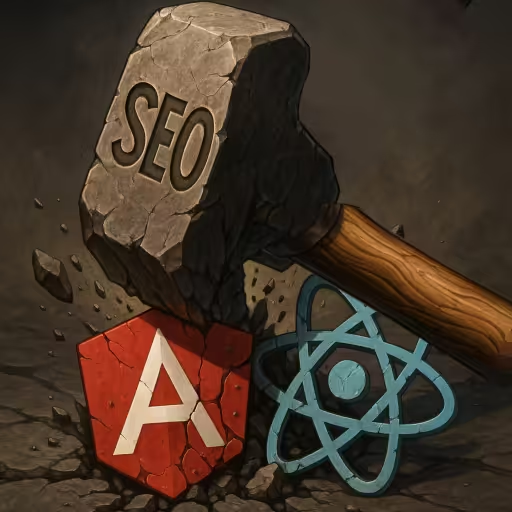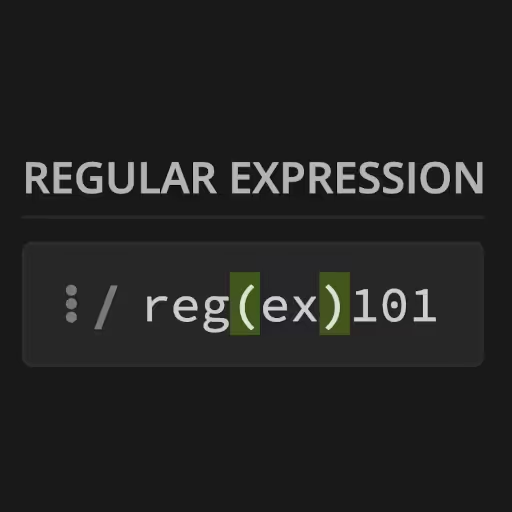What is SEO and Why is it so Important?
SEO (Search Engine Optimization) is the process of improving your website so it ranks higher in search engine results (primarily Google), with the goal of getting more relevant visitors for free (organic traffic), instead of paying for ads or relying solely on social media.
Why is SEO so important?
Because "organic search" is how most people find things online.
- If your site doesn't show up when people search for the product, service, or information you offer, you simply miss out on that traffic—and that means fewer leads, sales, or signups.
- Ranking on the first page (especially the top 3 results) gets exponentially more clicks than anything lower. Page 2 is basically invisible.
- Good SEO means your content is discoverable when people are actively looking for it. That's high-intent, high-value traffic.
Why Does SEO Matter?
SEO Matters because:
1. Most web traffic starts with a search.
People Google everything—questions, products, reviews, how-to guides, local businesses, you name it.
2. It compounds.
A well-optimized page can generate consistent, "free" traffic for years without ongoing ad spend.
3. Trust and credibility.
Sites that rank well are seen as more legitimate and trustworthy.
4. Cost-effective.
Unlike paid ads, organic search traffic doesn't stop when you stop paying.
What SEO Actually Includes
- Technical SEO: Making sure your site is crawlable, loads fast, works on mobile, and doesn't have errors.
- On-page SEO: Using the right keywords, well-structured content, clear headings, alt text, and internal links.
- Off-page SEO: Earning links and mentions from other reputable sites (backlinks), social signals, and building authority.
- Content: Satisfying search intent better than the competition.
Bottom line:
If you want your website to be found by people who are looking for what you offer, you need SEO. Without it, your site is basically invisible to the wider world—unless you pay for every visitor, which doesn't scale.
When SEO Really Doesn't Matter
SEO doesn't actually matter when you're dealing with sites or apps that aren't built for public discovery in the first place. These include personal portfolios you share directly, internal tools or dashboards locked behind logins, private or regulated portals, and anything intentionally hidden from search engines—either for privacy, security, or pure irrelevance to random search traffic. For these cases, chasing Google rankings is a waste of time (and can even be a risk), because all traffic comes from direct links, referrals, or controlled channels—not organic search. Focus your energy where it moves the needle: user experience, security, and access control, not SEO.
1. Personal Portfolio / Resume Sites
- Purpose: Hand out a link, look professional, not trying to rank for anything.
- Visitors: People you already met, recruiters, referrals—not random searchers.
2. Internal Company Tools or Intranet Sites
- Purpose: Used only by employees or partners, not public.
- SEO Value: Zero. You may even want these sites hidden from Google.
3. Apps or Dashboards Behind Logins
- Purpose: Tools that require authentication to access (e.g., SaaS dashboards, admin panels).
- SEO Value: Zero, not indexed.
4. Temporary Event Sites / Short-Term Campaigns
- Purpose: Promoted only via direct links (email, social, QR codes, etc.), not intended to rank.
- SEO Value: Minimal, unless you expect traffic from search.
5. Prototypes, Staging, or Demo Sites
- Purpose: For demoing features, client review, testing—not for public discovery.
- SEO Value: None. In fact, you might want to block indexing.
6. Closed Communities or Forums
- Purpose: Member-only content, invite-only groups.
- SEO Value: Often intentionally noindexed.
7. Brand Names with Zero Competition
- Example: You own a totally unique, invented name. Anyone searching your brand will find you no matter what, unless you actively block Google.
8. Web Apps Reached Only via Direct App Stores (PWA, Electron, mobile)
- Purpose: Downloaded or accessed via app stores, not web search.
- SEO Value: Irrelevant for discovery.
9. Highly Regulated/Private Content
- Purpose: Healthcare portals, legal portals, financial dashboards, where public search would be a liability.
- SEO Value: None.
Summary Table
| Type | SEO Needed? | Why? |
|---|---|---|
| Personal portfolio | No | Only shared directly |
| Internal tool/dashboard | No | Not public, behind login |
| Temporary campaign microsite | No | Accessed via direct links |
| Prototype/staging/demo | No | Not for public, may block index |
| Brand with zero search competition | Minimal | Will show up for name regardless |
| Closed/invite-only community | No | Only for logged-in users |
SEO Only Matters If..
- Discovery via search drives meaningful new traffic, leads, or revenue.
- Your site's content competes in search results (for topics, answers, solutions).
- You care about ranking for non-branded keywords (not just "MyName Portfolio").
SEO Caveat:
- For public projects, SaaS, content sites, blogs, online shops, SEO always matters—even basic hygiene (title tags, crawlability).
- For anything else, you can usually ignore it—or just do the absolute minimum (proper <title>, favicon, etc.) for completeness.
Short answer:
If your website's only audience comes via links you hand out, SEO is basically irrelevant. For any site that expects "new" people to discover it organically via search, SEO matters—otherwise, ignore it.
Minimum SEO Requirements
What are the SEO requirements? Here's a concise, "SEO Minimum Viable Hygiene" checklist for a personal portfolio site.
1. Unique & Descriptive <title> Tag
- E.g. <title>Jane Smith – Full-Stack Web Developer | Portfolio</title>
- Should reflect your name and main profession/role.
2. Meta Description
- E.g. <meta name="description" content="Portfolio of Jane Smith, a full-stack web developer specializing in Angular, Node.js, and modern web technologies.">
- Keep it \~150-160 characters, summarize your skills/what you do.
3. Favicon
- Include a favicon (favicon.ico or .png) so browser tabs and bookmarks look clean.
4. Open Graph & Twitter Cards
- Helps your link look good when shared on LinkedIn, Twitter, etc.
<meta property="og:title" content="Jane Smith — Full-Stack Web Developer" />
<meta property="og:description" content="Portfolio of Jane Smith, a full-stack web developer." />
<meta property="og:image" content="https:\\yourdomain.com/assets/og-image.jpg" />
<meta property="og:type" content="website" />
<meta property="og:url" content="https:\\yourdomain.com/" />
<meta name="twitter:card" content="summary_large_image" />5. Mobile-Responsive Layout
- Use viewport tag:
<meta name="viewport" content="width=device-width, initial-scale=1" />
- Make sure it doesn't look broken on a phone.
6. HTTPS
- Serve your site over HTTPS. (Most hosts do this by default.)
7. Fast Load
- Images are optimized (not multi-megabyte uncompressed .pngs).
- No endless animation libraries or bloated scripts unless you need them.
8. Noindex for Dev/Staging
Google can, and does, crawl everything it can find, including random subdomains, staging servers, and "under construction" pages if they're public.
If Google indexes these, it can lead to:
- Duplicate content: Staging/dev often mirrors production, creating multiple versions of the same pages, which dilutes your ranking signals.
- Thin/low-quality content: "Under construction," "test page," or unfinished pages offer zero value. If these get indexed, Google sees your domain as lower quality.
- Leaking confidential or buggy features: Staging sites often contain features you're not ready to show, or even sensitive data.
- Wasted crawl budget: Google spends time crawling junk instead of your real content.
If you have a test/staging site, make sure it's not indexed by placing <meta name="robots" content="noindex"> in the <head>.
9. Robots.txt (Optional)
You should at least have one robots.txt file served by your website—even if it's empty, or just:
User-agent: *
Disallow:10. Accessible Content
- Use semantic HTML tags (e.g. <main>, <header>, <footer>, etc.)
- Alt text (<img src="" alt="Descriptive alt text goes here") on important images.
What You Don't Need
- Keyword stuffing, schema.org microdata, XML sitemaps, H1/H2 micro-optimizations, backlink outreach, or any "SEO plugin."
- Analytics is optional, but can be nice if you're curious who visits.
Bottom line:
Do the above, and your portfolio will look professional, work on any device, and show up fine for anyone searching your name.
Skip everything else.
Let me know if you want a literal copy-paste starter <head> template.
How to Write Good SEO Content
Here's a direct, opinionated breakdown of how you can write good SEO content that's actually effective, and is based on what works, what doesn't, and where most "SEO advice" is outdated or wrong.
1. Write for the Searcher, Not Just the Algorithm
User intent wins.
If someone lands on your page from Google, will they find exactly what they expect? Or is your page trying to "rank for a keyword" and ends up being generic?
- Understand what problem the searcher is trying to solve.
- Satisfy that as completely and efficiently as possible.
- Don't keyword stuff. That's obvious, but I'll keep saying it.
2. Title Tags & Meta Descriptions
- Title tag: Needs the main keyword, but also entices a human to click.
- "2024 Guide to Docker Compose: Modern Syntax, Real-World Examples"
- Meta description: Should answer the question: "Why should I click this instead of the other 9 results?"
3. Structure & Scannability
- Use clear headings (<h1>, <h2>, <h3>)—don't overthink, just mirror how a technical doc or Wikipedia article is organized.
- Short paragraphs, bulleted/numbered lists.
- Add a table of contents for long pages (anchor links are good for UX, and Google recognizes them).
4. Actual Content
Depth matters: Google is getting better at identifying thin, surface-level content. You don't need to write 4,000 words for everything, but you should answer the question in detail, cover related sub-topics, and handle "next logical" questions.
- Originality: If you're rephrasing the same advice as 20 other pages, you'll struggle. Add something: a diagram, code sample, dataset, personal data point, or even a better-organized answer.
5. Technical Stuff
- Use proper HTML—don't nest <h2> inside <p>, use one <h1> per page, and keep the DOM clean.
- Alt text for images: Describe the image functionally. For SEO, it's a minor factor, but for accessibility it's big (and Google does care). Bad alt text example: "image1.jpg". Good alt text example: "Screenshot of Docker Compose YAML file with modern syntax"
- Use self-closing tags (<img />) in HTML5 if you want, but it doesn't matter for SEO.
- Internal linking: Link related pages using descriptive anchor text, not "click here."
- Page load speed, mobile usability, and minimal JS are all strong signals.
6. Keyword Usage—Without Keyword Stuffing
Use the target keyword (or its close variations) in:
- Title tag (title="")
- H1 (<h1>...</h1>)
- A couple H2s if natural (<h2>...</h2>)
- ..some of the primary SEO keywords in the first 100 words of your content
- ..the <body> and conclusion, at least once or twice
Synonyms and related phrases help Google understand your topic's "entity" better (e.g. for a Docker Compose article: "container orchestration", "service definitions", "YAML schema", "volume mapping").
7. Images, Diagrams, and Code
- Google Images is still a traffic source. Descriptive filenames and alt text help.
- Code blocks: Use proper markup so Google can display code in search snippets.
8. SEO Content "Don't"s:
- Auto-generate "SEO content." Google's spam filters (and manual reviewers) are better than ever.
- Rely on backlink spam, old-school PBNs, or spun articles. This will tank you long-term.
9. SEO Content "Do"s:
- Update content periodically. Google notices freshness for many topics.
- Monitor with Search Console—what keywords are bringing traffic, and are you satisfying that intent?
TL;DR SEO Content Summary
| Factor | Do This | Don't Do This |
|---|---|---|
| Title | Keyword + human click appeal | Stuff 3-4 keywords in a row |
| Meta Description | Answer "why click?" | Auto-generate, leave blank |
| Headings | Clear, relevant, hierarchical | Fake or hidden headings |
| Content | Depth, coverage, actionable info, original perspective | Thin, generic, copied |
| HTML | Clean, semantic, accessible | Broken nesting, missing tags |
| Internal Links | Contextual, descriptive anchor text | "Click here", random linking |
| Images | Descriptive alt, filenames | Keyword-stuff, generic alt text |
| Keyword Usage | Naturally in titles, heads, intro, synonyms used | Awkward stuffing, repetition |
| Technical | Fast, mobile, no JS errors | Slow, broken mobile, popups |
Bottom line:
If you solve the user's search intent better than the competition, you'll win. The rest is just helping Google notice that you're doing it.
How to Write Good SEO Keywords
Writing good SEO keywords involves understanding your target audience, identifying relevant terms, and strategically incorporating them into your content.
1. Start With the Actual Searcher
Don't guess. Figure out what real people actually type into Google to find what you offer. Use tools like:
- Google Search Console (for your own site's queries)
- Google autocomplete (start typing your main idea, see what pops up)
- Ahrefs, SEMRush, Moz, or Ubersuggest for broader data
- People Also Ask and "Related searches" at the bottom of Google
2. Aim for Intent, Not Just Volume
- High search volume is useless if the search intent doesn't match your content.
Example: If you have a SaaS app for "expense tracking," don't just use the keyword "expense"—that's too broad. Use "best expense tracker for freelancers," "how to track business expenses," etc.
- Think problems, solutions, and questions your ideal user has.
3. Mix Primary & Long-Tail Keywords
- Primary keyword: The main topic ("docker compose guide")
- Long-tail keywords: More specific searches ("docker compose v2 vs v1", "docker compose for nodejs project")
You want both, but long-tail keywords often convert better and are less competitive.
4. Write Them Naturally Into Content
Don't just list keywords. Use them in:
- Title tag and H1
- At least one H2
- The intro paragraph
- A couple times in the body (but not forced)
- Alt text and image filenames (where relevant)
Use natural language—Google now understands context, and not just "word matches".
5. Check Competitors
- Look at the top 3—5 results for your target keyword.
- What related terms do they use in their headings, intros, FAQs, etc.?
- Don't copy—just get a sense of what Google "expects" for that topic.
6. Avoid Keyword Stuffing
- If a sentence sounds awkward or repetitive, you're overdoing it.
- Google penalizes obvious keyword spam, and users hate it.
7. Think Synonyms and Related Phrases
- If your keyword is "markdown editor," work in phrases like "online markdown tool," "markdown to HTML converter," or "WYSIWYG markdown app."
- This makes your content more comprehensive, and Google understands the semantic relationships.
8. Prune Out Junk
- Don't use keywords that are too generic, too competitive, or don't match your content.
- If the top results are all Wikipedia, giant brands, or unrelated topics, pick a different keyword.
Quick SEO Keyword Examples
Say you have a tool called "DataTools Online" for converting CSV to JSON:
- Primary SEO keyword example: csv to json converter online
- Long-tail SEO keyword examples: best csv to json tool for developers, bulk csv to json conversion, csv to json free no signup
Now, naturally work those into your page title, headings, intro, and maybe a comparison table—don't just jam them in a block at the bottom.
Bottom line:
Good SEO keywords are the actual phrases your target audience uses, reflect their intent, and are woven naturally into well-structured, high-quality content. Don't overthink it, but don't wing it either—use real data, not hunches.
Conclusion
SEO isn't magic, but it's fundamental if you want your website to actually be found by the people who need it. Good SEO combines technical best practices, targeted keywords, high-quality content, and a clear understanding of user intent. Whether you run a blog, business site, or web app, investing in SEO pays off by driving consistent, qualified traffic over the long term—without relying on paid ads or luck. If you ignore SEO, you're invisible to most of your potential audience. Take it seriously, and the results compound.












